Exercise 1
A. Listen to three speakers starting a presentation to visitors to their organisation. Which ‘dos’ and ‘don’ts’ below does each speaker use?
DO
• Begin with a warm welcome – thank the audience for coming
• State your name and job title (or say what you do)
• Confirm the objective of the presentation
• Explain the structure of the presentation
• Say how long you will talk for
• Let the audience know when to ask questions – during or at the end of the presentation
• Move smoothly to the first point in the presentation
DON’T
• Apologise for your English (be confident and focus on expressing your ideas)
• Worry about making mistakes (people want to listen to your ideas, not your grammar)
• Rush things (take your time and give your audience time to understand the information)
Answer & Audioscript
Speaker 1
Begin with a warm welcome
State your name
Confirm the objective of the presentation
Say how long you will talk for
Let the audience know when to ask questions – during or at the end of the presentation
Speaker 2
Begin with a warm welcome – thank the audience for coming
State your name and job title
Confirm the objective of the presentation
Explain the structure of the presentation
Move smoothly to the first point in the presentation
Speaker 3
Begin with a warm welcome
State your name and job title
(– Apologise for your English)
Confirm the objective of the presentation
Let the audience know when to ask questions
Move smoothly to the first point in the presentation
Audioscript
1 Good morning, everyone. My name is John Hawkins, and what I want to do today is give you a short introduction to the company. I won’t take more than ten minutes because we have a lot to get through today. But if you have any questions, please feel free to interrupt.
2 I would like to start by offering a very warm welcome to everyone here today. Thank you very much for coming. I know many of you have travelled a long way to be here. As you know, I’m Pam Ellis, Managing Director here. What I want to do today is give you an introduction to the company. Firstly, a little information on operations; secondly, more about the people; and finally, the culture we have here. But to begin, I want to look at operations.
3 Good morning. I’m Paolo Orlandi, Managing Director of Production here. Er, sorry for my poor English. But I must, before we take a tour of the factory, give you an introduction to health and safety, so that everyone is safe here. Please, do ask questions if there is anything you don’t understand. I know some things I say may not be so clear. But, it’s important everyone understands what to do and what not to do in the production area. So, please, ask me questions. Any questions, any time, if anything is not clear. I’d like to start with some rules on where you can walk and where not to walk. As you can see …
B. Now look at three more unusual ways to start a presentation. What do you think is the value of using these techniques?
• Open with questions
• Begin by telling the audience about a conversation you had recently
• Start with a personal story
C. Listen to three more presentation openings and decide which unusual technique in B each speaker uses.
D. How effective do you think these alternative techniques were, and why? Would you be comfortable using them? Why / Why not?
Answer & Audioscript
B
Standard openings are useful because they are highly structured and offer information in a logical and clear way. However, some audiences might find this approach boring and welcome a less standard approach which engages and motivates them in some way to listen.
C
Speaker 1: Report a conversation to confirm that the presentation objectives are those of the audience
Speaker 2: Start with questions to engage the audience
Speaker 3: Tell a personal story about success to motivate the audience to listen
D
The effectiveness of these presentation openings will depend on how the audiences react and engage with the presentation.
Audioscript
1 So, before I begin and tell you why I am here, I would like to start with why you are here. And how can I know that? Well, I asked a couple of you during coffee this morning. Jackie, over there, yes, she wants to learn about which countries we are active in, as she wants to work abroad one day. Good, I’ll talk about that. Peter, he’s a finance guy and wants to know more on the numbers. Are we profitable? Important question, Peter, and I’ll talk about finance too. And Samir, the interest there is how to become a leader as quickly as possible. And I will talk about that too – what kind of organisation we are, and what kind of people do well here.
2 To begin, before I say anything, I’d like to ask you a few questions, find out what you know about this organisation. Who knows how many people work here? OK … put your hand up if you know the answer to these questions. Which countries are we active in? … OK. What are our main products? … Hmm, so, not so many of you. That’s fine. That’s why I’m here. My name’s Pam Ellis and I want to tell you a little bit about …
3 Now, to start, I’d like to share a story with you, about a young man, around twenty years ago, who was sitting right where you are standing, new to the company, a little nervous on the first day, not knowing what to expect. Well, that was, as you can probably guess, me all those years ago. On that day, I listened, and I continued to listen and learn, and now I’m Managing Director. So, welcome.
Exercise 2
A. Listen to the first speaker continuing his presentation and introducing his company. Note down the information he gives about the following.
COMPANY PROFILE
When established: …………………………………
Main strength: …………………………………
Size of workforce: …………………………………
Countries of operation: …………………………………
Plan for growth: …………………………………
B. How did the speaker react to the question? Do you think this is a good way to react to questions? Why / Why not?
Answer & Audioscript
A
When established: Three years ago
Main strength: Innovation
Size of workforce: 56, 20 nationalities, average age 29
Countries of operation: Five
Plan for growth: Rising to 65 employees; plans to remain small
B
The presenter reacted with very positive feedback that it was a great question. This form of positive feedback can show respect for the audience member who asked the question, and encourage more questions, which helps the flow of information between presenter and audience.
Audioscript
JH = John Hawkins Au = Audience member
JH: So, let’s begin with the most important part of the company, and that’s its people. And there are three important points I want to make here. Firstly, we’re a very young company. It was set up only three years ago and the average age is only twenty-nine. This means we’re fresh and energetic and we really like innovation, which is our main strength. Secondly, we’re a small company, with only fifty-six people at the moment.
This is also important because we want to stay personal; people know each other here, we have a family atmosphere, which our customers also feel and love about us. And finally, and as I said earlier during lunch to some of you, we are very international. In fact, we now have twenty different nationalities in the company, working in five countries. For me, on a personal note and speaking very openly, this is important as I believe very much in being international and the value of working across different cultures. So, if you can take a look at this slide, you will see the nationalities in the company. I hope I haven’t missed anyone. Truly international. Great. Yes, a question?
Au: Is the company growing? Getting more international?
JH: Great question. Really good question, in a number of ways. Yes, we are growing, probably to around sixty-five people this year. But I don’t want to grow much more or we become too big, too much a large corporation. So, yes but no. We are small. We want to be small. And we plan to stay small. But I’ll say more about that a little later. Are there any other questions now on that? So, I’ll close there. Thank you very much for listening. And I’ll hand over to Paul to tell you something about products and services.
Exercise 3
A. Listen to some comments from customers and staff about Kloze-Zone. Match the speakers (1-6) with the problems (a-h). You need to match some speakers with more than one problem.
a Window displays do not always engage customers. ………
b Fast fashion is mostly marketed at women. ………
c Staff work long hours: from 9 a.m. to 7 p.m., including Saturdays and Sundays. ………
d The store should have more promotions and offers for customers. ………
e They should have more interesting marketing campaigns. ………
f Shop assistants don’t help customers in the fitting rooms. ………
g Staff turnover is fairly high in some locations. ………
h Brand awareness is low. ………
B. Which of the issues mentioned relate to customers and which ones to staff? Which ones relate to both?
Answer & Audioscript
A
a Speaker 1 b Speaker 3 c Speaker 5 d Speaker 2
e Speaker 3 f Speaker 4 g Speaker 6 i Speaker 6
B
a customers b customers c staff d customers
e customers f both customers and staff
g staff h both customers and staff
Audioscript
1
So, you’re asking about window displays? Well, I think this is something the company could improve. Kloze-Zone ’s design and quality are great, but I’d like to see more innovation in the window displays because it’s what makes you go into a store when you’re walking down the High Street.
2
We have some special offers and promotions, but our competitors, for example, organise special days in their stores every season, with clothes at 50 percent off. That attracts a lot of interest. I know this heavy discounting doesn’t increase sales that much, but it works really well to raise brand awareness. We did have a special event for the store opening – it was a lot of work, but it was great; there was a local band playing and staff gave out free T-shirts to customers. Another thing is, I think we should organise some kind of promotional event in months like November and February, to promote the store. Those months are very quiet for us.
3
I think fast-fashion retailers do a lot to market their clothes at mostly women. I get bored with seeing the same kinds of adverts that are targeted at girls. I think they should aim their campaigns at guys, too. For example, I like going shopping with my girlfriend. Also, when men go shopping, we often buy two of the same thing if we really like it, so that’s good business. Perhaps they need more engaging marketing campaigns for guys?
4
What do I think of their customer service? Well, shop assistants sometimes seem too busy to help customers when you’re trying on clothes in the fitting rooms. I mean, you might want to try on a different colour or size, and you’re not with a friend, so it’s di cult. I think they need to employ more staff in the store. But I love their mobile app and it’s dead easy to use. The design is really cool because you can check out the clothes and mix and match them online before you come to the shop.
5
Well, I work in the Berlin store. It’s difficult because there are a lot of High Street fashion stores in Berlin – it’s very competitive. But we work really hard. When we first opened, it used to be fun, then a couple of my colleagues left last month because of the long working hours. We have to work from nine to seven, and Saturdays, too. And even some Sundays. I don’t know about Japan – I think they only get two weeks of holiday every year there. But in Germany workers expect a break and longer holidays, you know?
6
What could we improve at Kloze-Zone ? The main problem I have as a store manager is that staff turnover is pretty high. Some young people start working in fashion thinking it’s going to be good fun, trying on clothes all the time. They don’t realise you’re on your feet all day and you have to be polite to the customers all the time – even when they complain and return items. I need staff who understand fashion, although, to be honest, a lot of the people I interview aren’t even aware of our brand. They confuse us with other High Street stores! I think we need to improve brand awareness to attract both more customers and staff.
Exercise 4
A. Listen to a woman talking about her company on the radio. Decide if the statements are true (T) or false (F).
1 Cynthia is used to being on the radio.
2 Her company exclusively makes woollen clothing.
3 The business developed from her hobby.
4 At first the clothes were sold only in local shops.
5 Cynthia took a course in clothing design.
6 Product placement boosted sales.
7 The jumpers are still hand-knitted.
8 Cynthia doesn’t want anything to do with woolly clothes in her retirement.
B. Listen again and choose the correct option.
1 Why is the company name not really appropriate now?
a None of the clothes are made from wool.
b The clothes are made from several different materials.
c Most of the clothes are made from cotton.
d The clothes are for all seasons.
2 How did Cynthia feel about her early business?
a She was surprised at its success.
b She enjoyed her popularity.
c She was overwhelmed by the amount of orders she was receiving.
d She was disappointed.
3 The Woolly brand sells itself because
a the garments are expensive.
b the garments are unique.
c the garments are only made from good quality materials.
d a well-known celebrity advertises them.
4 Which country outside Britain did she first sell her clothes to?
a France
b Germany
c UFA
d Denmark
5 When did she first realise the importance of brand loyalty?
a From the beginning.
b When she got mail from different countries.
c When clients began to order tops in advance.
d When customers wrote to her personally.
6 Now her problem is that
a she doesn’t speak any Asian languages.
b she needs to employ more people.
c she needs to find reliable sales people.
d she needs a translating program for Asian languages.
7 What is her main focus for the future?
a to work on new designs and materials
b to expand into warmer markets
c to retire
d to learn another language quickly
C. Choose the best title for the radio programme.
a Five rules for growing a business
b Learning business the hard way
c Woolly – a success story
Answer & Audioscript
A
1 F – It’s not often that I am invited to give a talk on the radio, so I am delighted to be here.
2 F – Having said that, the business has expanded … to include tops made from cotton, merino wool, cashmere and silk …
3 T – I began to knit and design jumpers for myself when I was about thirteen.
4 T – I sold them in local boutiques …
5 F – I needed to learn business skills, so I enrolled on a course.
6 T – … She wore my tops in her TV series and so I had product placement … It’s great publicity!
7 T – I was tempted to stop hand-knitting the jumpers, but realised that this wasn’t a good idea as they would no longer be unique.
8 F – … I hope to retire somewhere nice and cool where I can wear my woolly jumpers.
B
1 b – The name is misleading now: the brand has grown to include tops made from cotton, merino wool, cashmere and silk.
2 a – I couldn’t believe that my tops were so popular.
3 b – The jumpers sold themselves because each one is original.
4 c – I was selling the garments in the States and the UK.
5 d – Many clients have since written to say that they never buy any other tops but mine … it was then I realised that brand loyalty is really very important.
6 d – We’re looking into a software package that will take care of it.
7 c – I’m planning to retire in a few years’ time so that’s something to concentrate on.
C c
Audioscript
It’s not often that I am invited to give a talk on the radio, so I am delighted to be here. So, I’ve been asked to talk about how I started my business and how my knitwear became the well-known, top-selling brand, Woolly. The logo is, of course, a sheep. Having said that, the business has expanded since it was named and the brand has grown to include tops made from cotton, merino wool, cashmere and silk, so they’re for all seasons, not just winter.
I began to knit and design sweaters (jumpers) for myself, when I was about thirteen. I used to buy cheap balls of wool in the sales, and then made them into colourful jumpers. They were all original, and still are today. Friends wanted to buy them, so when I left school I went into the business of producing jumpers which were all original and handmade. I sold them in local boutiques and soon I had a good client base. I couldn’t believe that my tops were so popular. The jumpers sold themselves because each one is original. I had to employ other people to help knit them and soon there were twenty working for me and we were selling them all over the country.
I decided that if my business was to expand further, I needed to learn business skills, so I enrolled on a course. After that I became more confident and decided to approach a well-known actress to become the face of my brand. She wore my tops in her TV series and so I had product placement, just like that. It’s great publicity! Sales increased dramatically and I had to take on more staff. I was tempted to stop hand-knitting the jumpers, but realised that this wasn’t a good idea as they would no longer be unique. People wanted one-off original handmade sweaters and that’s what I gave them. Of course, this made the garments very expensive, but there was certainly a demand for them. Luxury items are always costly.
I was selling the garments in the States and the UK, but soon I was getting queries and requests for specific designs from customers in France, Germany, the Netherlands and Denmark. Here we had real customer engagement, which is not something I had considered before. Many clients have since written to say that they never buy any other tops but mine. That was very encouraging, and it was then I realised that brand loyalty is really very important. What surprised me was that clients would be happy to order tops well in advance, so that their orders would be ready as the season arrived.
At the moment, I’m trying to venture into Asian markets. I am taking a cautious approach because I need to have my catalogues translated into languages such as Urdu, Hindi, Thai, Mandarin and Japanese. We’re looking into a software package that will take care of it. I have to find reliable translators and interpreters for my marketing team, too. It would be easier to employ local people, really, but how do I source them?
I’m planning to retire in a few years’ time so that’s something to concentrate on. I have loyal staff who can run the business for me, and I hope to retire somewhere nice and cool where I can wear my woolly jumpers and knit just for fun!
Test
1. Listen to the speaker and choose the correct response a, b or c.
1 a b c
2 a b c
3 a b c
4 a b c
5 a b c
Answer & Audioscript
1 b 2 a 3 c 4 c 5 b
Audioscript
1 Sales haven’t been very good recently.
A Sorry, I’m meeting a client.
B It’s important to have good sales.
C Why don’t you increase sales?
2 I’m worried about missing the deadline for this report.
A Why don’t you stay late tonight and finish it?
B Have you tried writing in English?
C It’ll be easier if you write more quickly.
3 I haven’t had a holiday for two years and I’m exhausted.
A Have you tried organising a holiday?
B It would be a great opportunity to go on holiday.
C I think it’s important for everyone to have regular breaks.
4 I never manage to finish any task properly.
A You need to finish everything each day.
B Why don’t you spend more time on everything?
C Have you tried asking your boss to look at your workload?
5 I don’t know how to use this equipment correctly.
A Don’t be afraid to use it.
B Don’t be afraid to ask someone to train you.
C You need to use it every day.
2. You will hear eight short recordings twice. For questions 1–8 choose the correct answer.
1 Which product had the biggest sales last year?
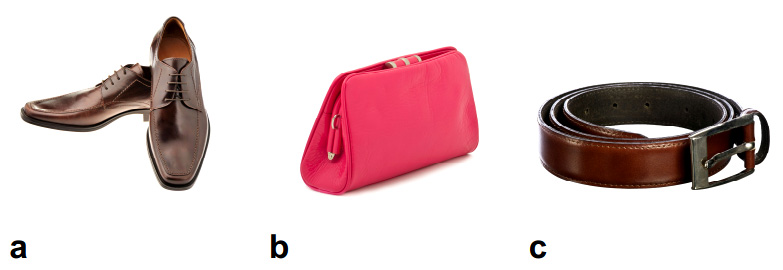
2 What is Julia going to do tomorrow?
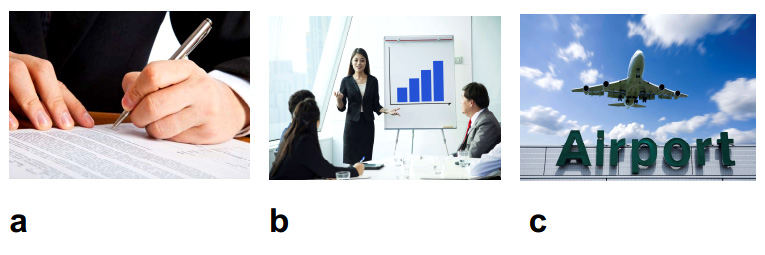
3 Which date is the sales conference?
a 20 April
b 10 May
c 20 May
4 What do the speakers decide to do?
a expand the product range
b bring the products up-to-date
c design a new logo
5 Where has the market grown dramatically?
a Europe
b China
c North America
6 Who are the company’s target customers?
a wealthy millennials
b professional women
c retired people
7 What is the company planning to invest in next year?
a staff
b new headquarters
c a factory
8 Which graph describes last year’s sales?
a
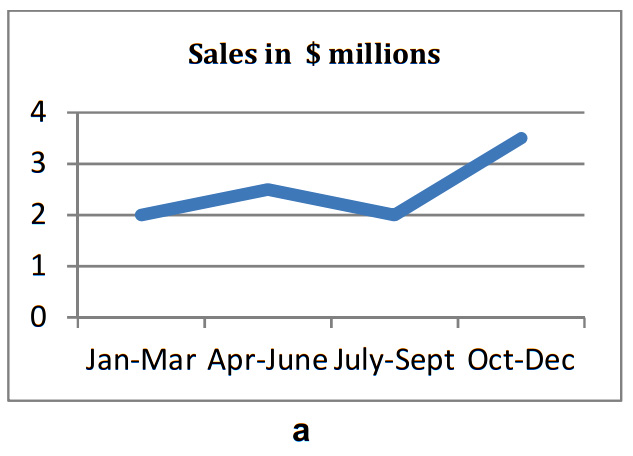
b
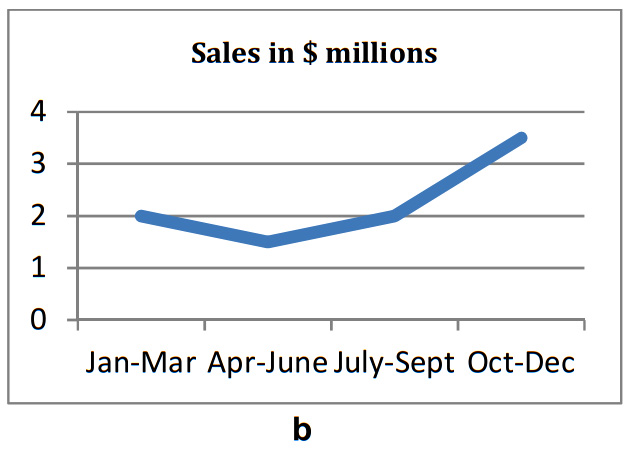
c
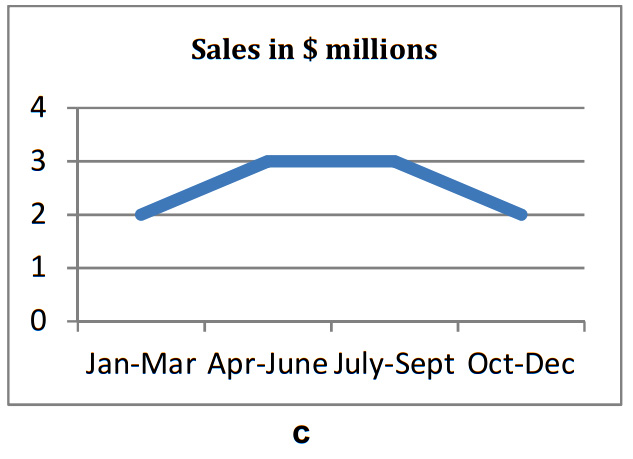
Answer & Audioscript
1 b 2 b 3 c 4 b 5 b 6 c 7 a 8 a
Audioscript
1 Which product had the biggest sales last year?
Sales results last year of our three leather ranges: shoes, belts and handbags were mixed. We expected sales of shoes to reach $4 million, but they only reached $3.2 million. We were surprised by the new fashion for wide belts, which saw sales increase by nearly 50% to $2 million. Handbags however did extremely well, reaching $3.4 million.
2 What is Julia going to do tomorrow?
A: Hey, Julia, can you meet Mr Tanaka at the airport tomorrow?
B: Sorry Markus, I’ve got to do a presentation about the new products tomorrow to a new customer.
A: Do you think he’ll sign a contract tomorrow?
B: It depends how the negotiations go. He’s flying home early tomorrow evening so we may not have time to sign.
A: Are you taking him to the airport?
B: No, Piotr is.
3 Which date is the sales conference?
A: Have you seen this email about the sales conference?
B: You mean the April conference?
A: No, the one on 10th May.
B: Are you sure? I’ve got 20th April in my diary.
A: That was the original date but they changed it to 10th May, and now they’ve changed it again to 20th May.
B: Are you sure?
A: Yes, look here.
B: Okay. I’m glad you told me.
4 What do the speakers decide to do?
A: Why are we losing customers every month?
B: Customers say our products are old-fashioned and too expensive. Don’t they think we’re a luxury brand anymore?
A: The brand-stretching last year damaged the luxury image. They want more modern designs.
B: Should we change our logo as well?
A: The first thing is to focus on modernising the product range.
B: You’re right.
5 Where has the market grown dramatically?
Welcome to LXX Luxury Gifts. As you can see from this chart, our main market is North America. Last year we looked at new markets we could target and we’re planning to launch in South America next month. We saw the most significant growth in sales in China, but unfortunately sales in Europe were disappointing. It seems that our advertising was unsuccessful.
6 Who are the company’s target customers?
A: Who’s your target market? Is it wealthy millennials?
B: That was our aim originally, but we found that it’s mostly retired professional people who are our biggest market. They love the products and have the money to spend. And it’s not only the women who buy them. Our products appeal to men and women who are no longer working.
7 What is the company planning to invest in next year?
Moving forward to investment plans for the coming year. Last year we invested in the building of a new factory, which is now up and running at full capacity. However, as a result of this and the new technology, we realise that staff need more training so we plan to spend more on that next year. The construction of our new headquarters is postponed for now.
8 Which graph describes last year’s sales?
As you can see from the graph here, sales started slowly in the first quarter at $2 million and then rose slightly to around 2.5 million in the second quarter. However, by the third quarter sales had dropped back to 2 million. The last quarter saw a steady rise to reach 3.5 million.
Related Posts
- Practice Listening Business English Exercises for B1 – Leadership
- Practice Listening Business English Exercises for B1 – Working abroad
- Practice Listening Business English Exercises for B1 – Entrepreneurs
- Practice Listening Business English Exercises for B1 – Logistics
- Practice Listening Business English Exercises for B1 – Business strategy
- Practice Listening Business English Exercises for B1 – Job hunting
